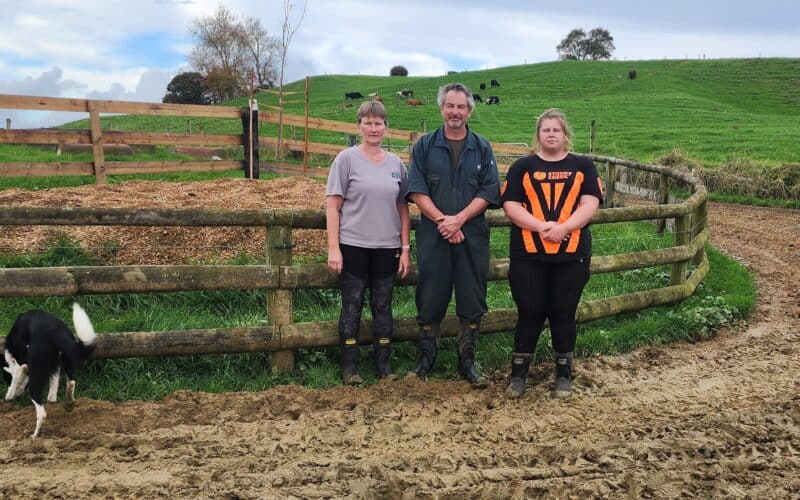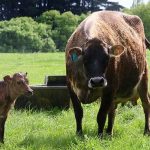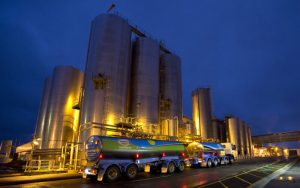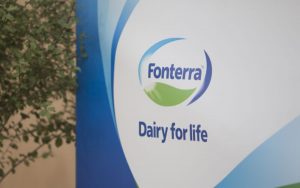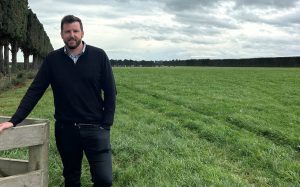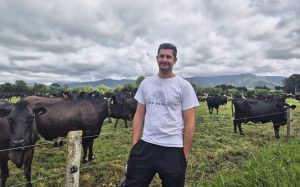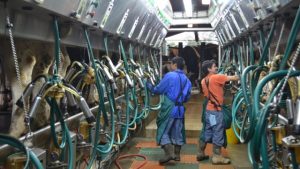
No aspect of the operation is too small to concern a south Waikato farming couple whose calves grow well and thrive.
Attention to detail is the backbone of Amanda and Dean Benson’s thriving calf-rearing system. With every meticulous step, they ensure the health and welfare of their animals, and it is this philosophy that has ensured their success.
Investing time and effort in raising healthy calves is not just a principle, but a way of life as they strive for healthy animals that reach their full potential.
The Bensons and their team member Hannah Jackson are into their third season on their 120ha farm in Okoroire, south Waikato. They milk 253 Jersey-cross cows on once-a-day all season and, with their purpose-built calf-rearing shed, run a slick system.
“It does take time to pay attention to detail but so do sick calves,” Amanda says.
“We try to stack everything in favour of those babies so they get the best start and one big focus is keeping everything clean.”
Through the calving period, they milk in the afternoons and switch to morning milking when most have calved. Calves are usually collected once a day in the morning and every new calf is weighed and the information is entered into MINDA.
Navels are sprayed up to seven times over the first couple of days – any time they are moved or handled – and all of the calves are bottle-fed on their first day.
“During the first feed we try to listen to what the calves are telling us, like if they’re hungry but scared or if they’re full from mum,” Amanda says.
“We will only stomach tube if they are too weak to suckle but that doesn’t happen often. If the weather looks bad we will bring them back anyway so they aren’t out in it.”

Every freshly calved cow is milked into a test bucket and her colostrum is tested with a Brix refractometer. All of the colostrum is graded and only the very best will be given to the newest calves. The milk is warmed to around 26-28degC and Benson checks it by testing with her finger.
They offer three feeds of two litres on that first day, then they go onto two feeds of 2.5L per day. The animals always have access to water and calf muesli, Fibre Gain and Opti Guard.
“Before things get busy, the early calves are spoiled and are given warm milk and once it picks up they get warm milk for the first two days then transition to cold by starting with warm and adding cold as they’re drinking.
“Then the next day, it’s the opposite, they start cold and it’s topped up with warm so they learn to keep suckling.
“Every transition we focus on making it easy and slow.”
The calves are grouped by age, not breed or weight, and the pens move according to the youngest animal in the mob.
“We don’t separate them by size because being a productive dairy cow is a competitive life.
“We make sure they all have the same opportunity to drink milk and have access to feed so they have the best chance.
“There are heaps of feed troughs. If they all wanted to eat at the same time they could.”
If the weather permits they have access to outside pens, and there are canvas curtains that can be pulled closed to keep them warm and protected from the weather. The curtains are recycled truck curtains sourced cheaply from Tauranga Canvas.
“The curtains make a massive difference. It can be cold and we’re all rugged up outside but you notice the difference as soon as you go inside when they’re closed, and they have a gap at the top between the rail and the roof for ventilation too.”
At around two or three weeks, the calves are disbudded by the vet with a local and general anaesthetic. Any extra teats are removed, beef bulls ringed and they are all vaccinated. Then they begin their transition to a mobile feeder in the outside pen and are fed 5.5L per calf per day in one feed.

The Bensons emphasise hygiene and biosecurity throughout the entire process and only farm staff are allowed in the calf shed. The bedding is replaced every year and the pens are water blasted and disinfected. The milk lines and all of the feeders are washed and scrubbed after every feed and the water troughs are emptied and cleaned twice a day. They even pick up calf faeces from the wood chip in the shed.
“We keep the feed and water fresh and we don’t overstock troughs because they won’t eat it once other calves have licked it and slobbered on it, or the birds have been in it.
“The same level of cleaning in the milking shed should be used for the calf milk equipment.”
Any treatments are recorded in MINDA but there is no sick pen as they haven’t needed one for seven years. They are quick to use pain relief if they feel the calf needs it.
Weaning takes place slowly between six and 10 weeks by monitoring meal intake, growth and physical signs of rumen development. Their average pre-weaning weight is 82kg and they hit 100kg at around 12 weeks. They continue feeding pellets and Fibre Gain until Christmas and use about 3t of calf pellets and 10t of Fibre Gain through the season.
“It’s a thorough process but we know it’s worth it. The calves are calm and settled and they don’t bellow or try to follow us out of the shed, and it’s rewarding not dealing with sick animals.”
